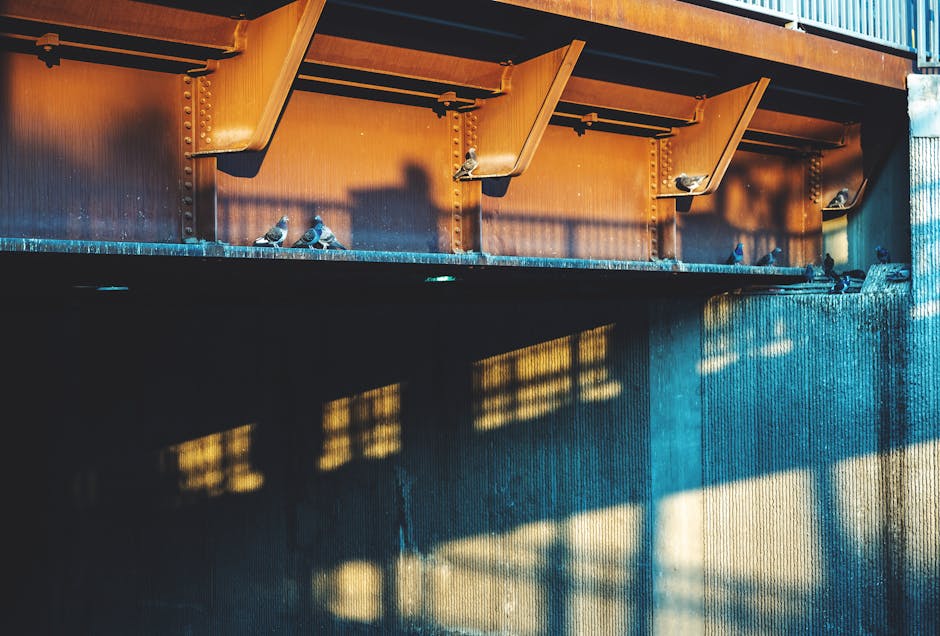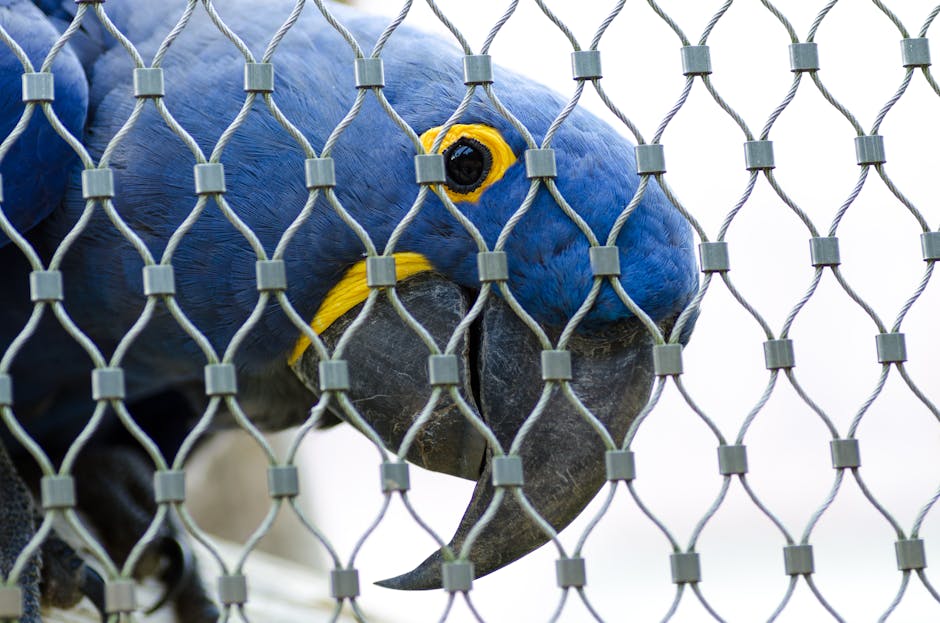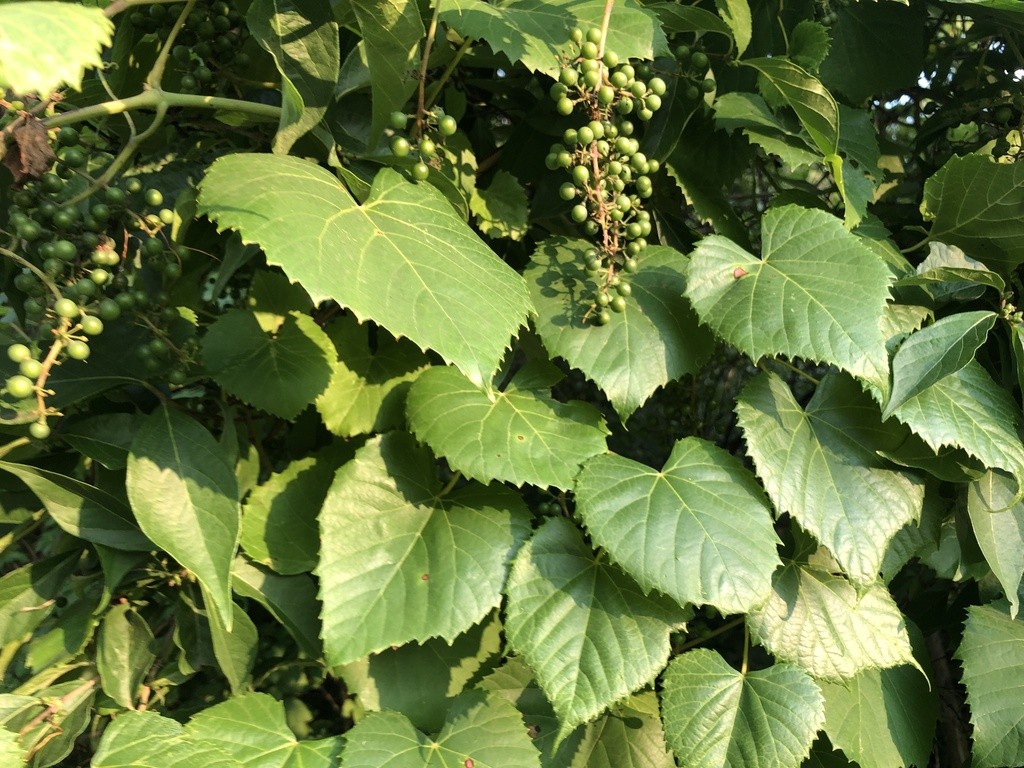Introduction

Bird netting is a versatile and effective solution for protecting crops, fruits, and structures from bird-related damage. In this article, we will explore what bird netting is and the benefits it offers.
What is Bird Netting?
Bird netting is a specialized mesh material designed to deter birds and safeguard various locations. Made of durable materials like polyethylene or nylon, bird netting creates a physical barrier that prevents birds from accessing protected areas and causing damage.
Benefits of Using Bird Netting
Using bird netting offers numerous advantages for bird control and protection:
-
Effective and Humane: Bird netting provides a non-lethal approach that effectively deters birds without causing harm.
-
Physical Barrier: By acting as a reliable shield, bird netting prevents birds from accessing and damaging crops, fruits, or vulnerable areas.
-
Preserves Quality and Quantity: Bird netting helps maintain the quality and quantity of harvested produce, ensuring higher yields and reducing the risk of contamination.
-
Environmentally Friendly: Unlike other methods, bird netting is an environmentally friendly approach that does not harm birds or the ecosystem.
-
Versatile and Easy to Use: Bird netting is versatile, easily installed and removed, providing flexibility in protecting different areas as required.
-
Cost-Effective: Bird netting offers durable protection, requires minimal maintenance, and reduces the need for other costly bird control methods.
-
Discourages Nesting: Bird netting prevents birds from establishing breeding grounds in protected areas, further reducing bird-related issues.
Common Types of Bird Netting

Understanding the common types of bird netting can help you choose the most suitable option for your needs.
a. Polypropylene Netting
- Lightweight and UV resistant: Ideal for outdoor applications, polypropylene netting is lightweight and resistant to UV radiation.
- Multiple mesh sizes and strengths: Choose the appropriate mesh size and strength based on the birds you want to deter.
- Protects crops, gardens, and trees: Polypropylene netting effectively safeguards plants from bird damage.
- Easy installation: Secure polypropylene netting using clips, ties, or ropes for a tight fit.
b. Polyethylene Netting

- Strength and flexibility: Polyethylene netting is strong, flexible, and resistant to tearing.
- Color options for different applications: Choose from various colors to suit different applications and visibility preferences.
- Multiple applications: Polyethylene netting is used in aquaculture, poultry farming, and industrial settings.
- Proper installation and inspection: Regular maintenance ensures the netting remains intact and effective.
c. Nylon Netting

- Tear and weather resistance: Nylon netting withstands various weather conditions and provides reliable protection.
- Versatile applications: Nylon netting is commonly used in agriculture, aquaculture, and sports facilities.
- Considerations for bird size and pressure: Choose the appropriate mesh size and strength for effective bird control.
Selecting the right type of bird netting is crucial for achieving optimal results in bird control efforts. By understanding the characteristics and applications of polypropylene, polyethylene, and nylon netting, you can make an informed decision based on your specific requirements.
Preparing Your Area for Bird Netting

Bird netting is an effective solution for protecting specific areas from bird damage. Before installing the netting, it’s crucial to properly prepare your area. This section will guide you through the necessary steps to identify areas that need protection and measure your area accurately.
Identifying Areas That Need Protection
Conduct a thorough survey of your property to determine the specific areas that require protection from birds. Look for signs of bird damage, such as droppings, nests, or evidence of feeding. Pay close attention to vulnerable areas like gardens, fruit trees, vineyards, fish ponds, or outdoor dining areas.
Consider the types of birds that frequent your area and their specific behaviors that may cause damage. Understanding their patterns can help you identify areas that are most at risk.
Take note of any areas where birds are likely to roost or nest, such as eaves, rafters, or trees. These locations may require additional measures to prevent birds from accessing them.
Measuring Your Area

Accurate measurements are crucial for determining the amount of bird netting you’ll need. Follow these steps to measure your area effectively:
-
Use a measuring tape or a measuring wheel to measure the length and width of the area you want to protect. For square or rectangular areas, measure the sides directly. If your area is irregularly shaped, break it down into smaller sections and measure each section separately.
-
Take into account any obstacles or structures that may affect the installation of the bird netting, such as posts, trees, or buildings. Ensure that you measure around these objects accurately, allowing for enough space to cover the entire area adequately.
-
Add a few extra feet or meters to your measurements. This additional length will provide a margin of error and ensure that you have enough netting to cover the entire area effectively.
By identifying the areas that need protection and measuring your area accurately, you’ll be well-prepared for the next step: installing bird netting. In the following section, we’ll discuss the tools required for installation and the process of securing the netting to your area.
Installing Bird Netting

Proper installation of bird netting is crucial to effectively protect your area from unwanted avian visitors. This section will guide you through choosing the right tools for installation and securing the netting to your desired area.
Choosing the Right Tools for Installation
Consider the following factors when selecting your tools to ensure a successful installation:
-
Size and Type of Bird Netting: Determine the specific requirements of your application, whether it’s safeguarding a garden or fruit trees. Choose the size and material of the netting based on the durability needed and the size of birds you want to deter.
-
Cutting Tools: Use scissors or a utility knife to cut the netting to the desired size. Ensure precise cuts to achieve a snug fit and prevent any gaps that birds could exploit.
-
Securing Materials: Select suitable fastening options to secure the netting to structures or posts. Zip ties or twine are commonly used for attaching the netting securely, preventing birds from accessing your protected area.
-
Support Structures: If needed, install poles or stakes to create a sturdy framework for the netting. This additional support ensures that the netting remains taut and effective in deterring birds.
-
Access Equipment: In cases where the installation area is at a higher elevation, such as rooftops or tall trees, have a ladder or scaffolding available for safe access. This equipment will aid in reaching and properly securing the netting in these elevated areas.
-
Safety Gear: Prioritize personal safety by wearing gloves and safety glasses while handling the netting. These protective measures will minimize the risk of injuries from sharp edges or potential accidents during installation.
Securing the Netting to Your Area
Follow these steps to securely attach the bird netting to your intended area:
-
Clean the Area: Ensure the area is free of debris that could damage or compromise the netting. Remove any sharp objects or branches that might cause tears or snags.
-
Measure and Cut: If the netting is intended to cover a specific structure, measure the dimensions of the area to determine the required size of netting. Cut the netting to the appropriate size, allowing some extra material for overlap and securing purposes.
-
Framework Installation: If additional support is necessary, install poles or stakes around the area to create a sturdy framework. This framework will offer stability and help maintain the netting’s integrity.
-
Start at a Corner: Begin attaching the netting by securing it at one corner or side of the area. Use zip ties or twine to fasten the netting firmly to the structure or support framework. Ensure a tight fit to prevent birds from entering.
-
Progressive Attachment: Work your way around the area, securing the netting at regular intervals to ensure it remains taut and secure. Pay attention to any gaps or loose sections, making adjustments as necessary to maintain full coverage.
By following these steps and using the appropriate tools, you can install bird netting effectively, safeguarding your area from avian intruders.
Proper maintenance is essential to maximize the lifespan of your bird netting, which will be covered in the next section.
Maintaining Your Bird Netting

Regularly inspecting and maintaining your bird netting is crucial to ensure its effectiveness in protecting your area from birds and other pests. By identifying any signs of damage, wear, or holes, you can promptly address them and maintain a secure barrier. Here are some important steps to follow:
Regular Inspections
To keep your bird netting in optimal condition, perform regular inspections using the following guidelines:
-
Inspect for damage: Carefully examine the netting and support structures for holes, tears, or significant wear. Ensure stability and good condition.
-
Check for loose sections: Look for areas where the netting may be loose or sagging. Tighten or secure these sections to maintain a taut and effective barrier.
-
Identify access points: Pay attention to gaps, openings, or compromised sections that birds or pests may use to access the protected area. Repair them promptly.
-
Set a schedule: Establish a schedule for regular inspections based on your specific needs and adjust it according to weather conditions and bird activity.
Regular inspections help catch issues early on and prevent further damage or pest intrusion.
Replacing Damaged or Worn Netting

When you identify any damage, wear, or holes in your bird netting, it’s crucial to address them promptly. Follow these steps for replacing damaged or worn netting:
-
Assess the damage: Evaluate the extent of the damage or wear. Determine if it can be repaired or if replacement is necessary. Small holes or tears can often be fixed using patch kits designed for bird netting.
-
Use the right netting: When replacing damaged sections, ensure you use the same type and quality of netting to maintain effectiveness. Matching materials and specifications helps maintain a consistent barrier.
-
Consider full replacement: If the netting is extensively damaged or worn beyond repair, replace the entire affected section or even the entire netting to ensure integrity and effectiveness.
-
Inspect support structures: Alongside replacing the netting, check the condition of support structures such as poles or frames. Replace any damaged or compromised components to ensure proper installation and security.
Remember, regular inspection and timely replacement of damaged or worn netting will help you maintain an effective barrier against birds and protect your crops or property.
Word Count: 283 words
Wrapping Up

Final Tips for Using Bird Netting

To maximize the effectiveness of bird netting in protecting your area from avian pests, keep these tips in mind:
-
Secure the bird netting properly: Ensure the netting serves as an impenetrable barrier by tightly securing it around the protected area. Regularly check for loose spots or potential entry points and reinforce them as needed.
-
Regularly inspect and maintain the netting: Over time, environmental factors and bird activity can damage the netting. Regularly inspect it for signs of wear and promptly repair or replace damaged sections.
-
Consider the size of the mesh: Choose the appropriate mesh size based on the birds you are targeting. Smaller mesh sizes deter smaller birds, while larger mesh sizes prevent larger birds from accessing the protected area.
-
Install bird netting at the right time: Install the netting before the bird problem becomes severe to deter birds from establishing a habit of visiting the area. Early installation also prevents the need for additional bird removal or relocation efforts.
-
Combine bird netting with other deterrents: Enhance the effectiveness of bird netting by using it in conjunction with scare devices, reflective tape, or sonic repellents. This multi-layered approach creates a more hostile environment for birds, further deterring them.
Summary of Benefits of Using Bird Netting
Bird netting offers several benefits for protecting your crops, plants, and property from avian pests:
-
Crop and plant protection: Prevent birds from accessing and damaging your agricultural produce, ensuring the quality and yield of your crops, fruits, vegetables, and plants.
-
Reduction of bird-related losses: Deter birds from your area, significantly reducing losses caused by bird feeding, nesting, or roosting activities. This leads to financial savings and improved productivity.
-
Preservation of aesthetics: Maintain a clean and visually pleasing environment by preventing birds from causing unsightly messes with droppings or dislodging plants or flowers.
-
Environmental friendliness: Bird netting offers a humane and eco-friendly solution to bird control, maintaining the balance between human activities and wildlife conservation without harming the birds.
-
Versatility and adaptability: Customize bird netting based on your specific needs, as it is available in various sizes and materials. It can be used in gardens, orchards, vineyards, and commercial facilities.
By utilizing bird netting, proper installation, regular maintenance, and complementary bird deterrent methods, you can effectively protect your area from avian pests while promoting a harmonious coexistence between humans and birds.
Frequently Asked Questions
Frequently Asked Questions
1. What is bird netting used for?
Bird netting is used to protect crops, fruits, and structures from bird-related damage. It creates a physical barrier that prevents birds from accessing protected areas and causing harm.
2. How does bird netting work?

Bird netting works by creating a barrier that denies birds access to protected areas. The netting is made of durable materials like polyethylene or nylon and is installed tightly to prevent birds from entering. It acts as a humane and effective deterrent without causing harm to the birds.
3. What are the benefits of using bird netting?
Using bird netting offers several benefits, including:
- Effective and humane bird control
- Physical barrier that safeguards crops, fruits, and vulnerable areas
- Preservation of produce quality and quantity
- Environmentally friendly solution
- Versatile and easy to use
- Cost-effective compared to other bird control methods
- Discourages nesting and breeding grounds
4. How do I choose the right bird netting?

To choose the right bird netting, consider factors such as the type of birds you want to deter, the application (e.g., protecting crops, gardens, or trees), and the specific requirements of your area. Different netting materials like polypropylene, polyethylene, and nylon offer varying strengths, durability, and applications.
5. How do I install bird netting?

To install bird netting, follow these steps:
- Clean the area and remove any debris.
- Measure the area accurately, considering obstacles and structures.
- Choose the right tools, including cutting tools, securing materials, support structures, access equipment, and safety gear.
- Secure the netting starting from a corner and progressively attach it, ensuring a tight fit.
- Regularly inspect and maintain the netting to address any loose sections or damage.
Proper installation is crucial for effective bird control and protection.

Leave a Reply